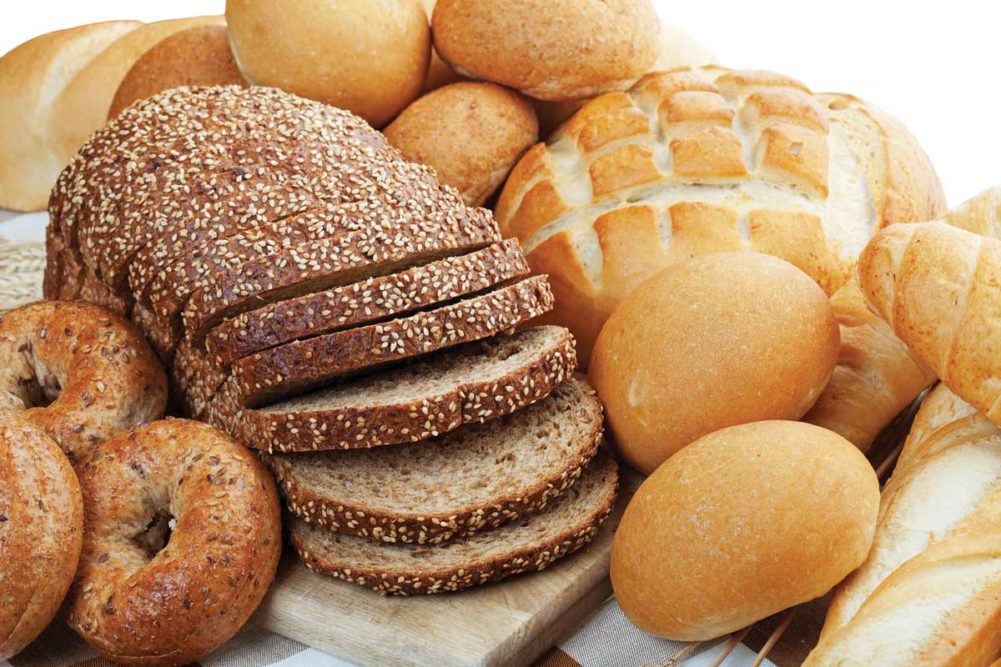Formulators can’t just add as much protein as possible to reach a claim. There are limits to how much a bakery formulation can take on. Depending on the protein, too much will have different effects on the finished product.
“The challenge with protein addition to baked goods is to achieve a desired level and profile of protein without affecting the characteristics of the dough,” said Arnaud Deniaud, vice president, technical services, Lesaffre Corp. “Some protein sources such as vital wheat gluten have a positive impact on dough strength. Other sources have good nutritional value but are derived from known allergens such as whey.”
Protein can change water absorption, texture and even flavor.
“Certain protein isolates and concentrates may have strong flavor profiles, and by using a combination of whole, plant-based protein options, these off-flavors can be reduced,” said Jennifer Tesch, chief marketing officer, Healthy Food Ingredients.
Most protein sources will contribute to off-flavors when added in bulk, but taste becomes more of a factor for certain applications.
[Related reading: Baking with protein-based inclusions]
“There are some soy protein isolates as well as some pulses that actually have a much lower flavor impact, and those are the ones that you definitely want to use in a dough that’s very bland,” said David Guilfoyle, group manager of bakery fats and oils, DuPont Nutrition & Biosciences. “If there is something like a whole wheat dough that has a little more flavor, then you have a wider range of protein to work with. We can use those soy protein isolates that have a little bit of flavor that can even enhance some of the flavor of the whole wheat dough.”
Almond protein powder can also offer some relief from flavor impact. These powders are inherently clean tasting.
“Within blends, Almond Protein Powder can help dilute unwanted flavors from other proteins and create a well-rounded product with good flavor, nutrition and a simpler label,” said Jeff Smith, director of innovation, Blue Diamond Almonds Global Ingredients Division.
Relying too much on a protein that has a browning effect can also have unintended consequences on a baked good’s appearance.
“Dairy proteins tend to brown,” said Matt Gennrich, senior food scientist, Cargill. “All proteins do have the Maillard effect, so when you start packing in a lot into a product, it gets very dark, so that becomes an issue as well.”
Proteins can also impact the texture and therefore machineability. These ingredients absorb water and can fight other ingredients in the formulation for the available water. Whey protein, for instance, will take over the water available in the formulation, resulting in a dry, crumbly texture. To avoid that, bakers can add extra water, hydrating the proteins. However, add too much water and the dough becomes a sticky batter.
“You can’t process it from there,” said Marissa Stubbs, account manager, bakery, Agropur. “It’s going to get stuck on machines, which leads to poor manufacturing abilities.”
Blending can also reach a balance in water absorption for whey protein by combining it with a milk protein, adding more fat or an emulsifier like lecithin.
Bread is a natural application for added protein. But in this case, when the protein holds onto more water, the dough can become more dense, preventing the yeast from reaching its maximum rise potential, according to Mr. Gennrich.
“You might have to adjust your yeast level or try to find the right combination of proteins that work or even add a bit of egg white protein to promote more aeration and structure,” he said. “There’s a lot of different challenges to play around with.”
[Related reading: Ancient and sprouted flours bulk up plant-based bakery products]
Bakers can combat these water absorption issues by adding emulsifiers, adding more liquids or fats, or even changing the protein source. Bakers can also blend proteins to offset these challenges.
“Balancing proteins that may retain versus give up water can help optimize shelf life,” said Brook Carson, vice-president, product development and marketing, Manildra USA.
Different proteins, even from the same source, can all absorb water differently. For example, bakers can use pea flour, pea protein concentrate or pea protein isolate. These different ingredients contain 50%, 80% and 90% protein, respectively.
“Even though they are all derived from peas, they are going to have different water absorption levels,” Mr. Gennrich said. “Generally, the more protein you have, the more water it’s going to absorb, so you have to take that into account when you’re formulating.”
This article is an excerpt from the February 2020 issue of Baking & Snack. To read the entire feature on protein, click here.






